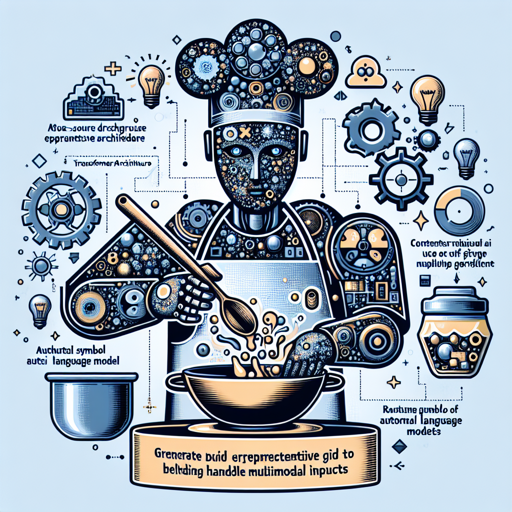Welcome to your exciting journey into the world of multimodal models! The LLaVA model, a cutting-edge open-source chatbot, leverages the power of large language models (LLMs) to understand and respond to both text and visual data. In this guide, we’ll walk you through the basics of using the LLaVA model, its primary features, and how to troubleshoot common issues.
Understanding LLaVA: The Transformer in Action
Think of LLaVA as a sophisticated chef in a bustling restaurant. This chef has mastered the art of combining ingredients (text and images) to create delightful dishes (answers). Using a transformer architecture, LLaVA is specifically trained to handle multimodal inputs by mixing together its expansive knowledge just as the chef blends various flavors to make a perfect dish.
Model Details
- Model Type: LLaVA is an auto-regressive language model equipped to respond to multimodal instruction-following queries.
- Base LLM: Built upon the base model from NousResearch/Nous-Hermes-2-Yi-34B.
- Model Date: Trained in December 2023, specifically the version LLaVA-v1.6-34B.
- Resources: For more reading, check out the official documentation.
- License: LLaVA is licensed under the same as the base model NousResearch/Nous-Hermes-2-Yi-34B.
- Questions: For any queries, feel free to visit the GitHub issues page.
Intended Use and Audience
LLaVA is designed primarily for researchers and hobbyists interested in advancing studies related to chatbots, computer vision, natural language processing, and machine learning.
Training Dataset
LLaVA’s knowledge comes from a rich blend of data:
- 558K: Filtered image-text pairs sourced from LAION/CC/SBU and captioned by BLIP.
- 158K: Multimodal instruction-following data generated by GPT.
- 500K: Academic task-oriented VQA data.
- 50K: Mixture of GPT-4V data.
- 40K: Data from ShareGPT.
Evaluation Dataset
The model’s performance is assessed using a comprehensive collection of 12 benchmarks, which include:
- 5 academic VQA benchmarks
- 7 recent benchmarks for instruction-following large multimodal models
Troubleshooting Common Issues
Even the best models can throw a tantrum occasionally! Here are some tips to navigate common hiccups you might encounter while using the LLaVA model:
- Model Not Responding: Ensure you’re providing clear, multimodal inputs. Just like a chef can’t cook without ingredients, LLaVA needs both text and visual prompts!
- Inaccurate Outputs: Verify your dataset quality. Poor inputs yield poor outputs; think of it as a chef relying on stale ingredients.
- Integrating with Other Code: Sometimes integration issues arise. Check for version compatibility, much like ensuring all your cooking tools are up to date.
For more insights, updates, or to collaborate on AI development projects, stay connected with fxis.ai.
Conclusion
At fxis.ai, we believe that such advancements are crucial for the future of AI, as they enable more comprehensive and effective solutions. Our team is continually exploring new methodologies to push the envelope in artificial intelligence, ensuring that our clients benefit from the latest technological innovations.

